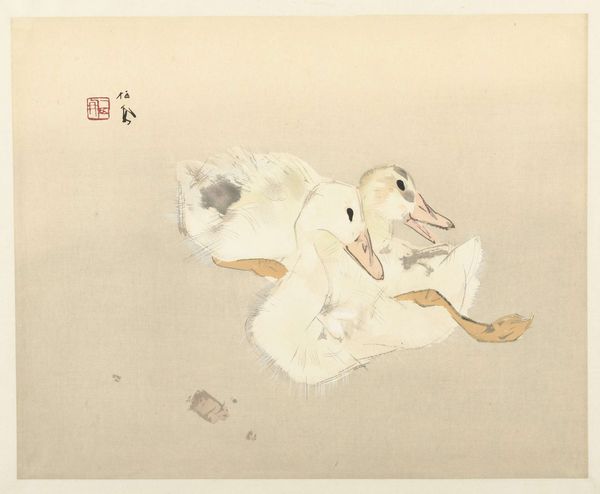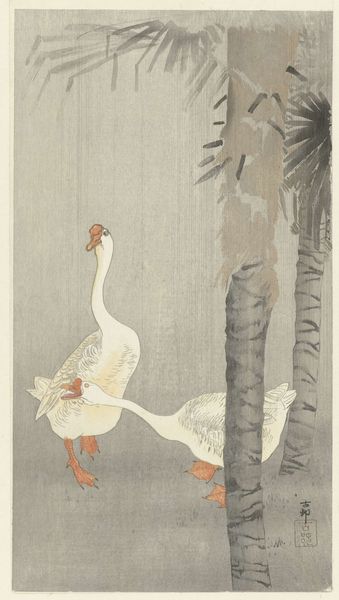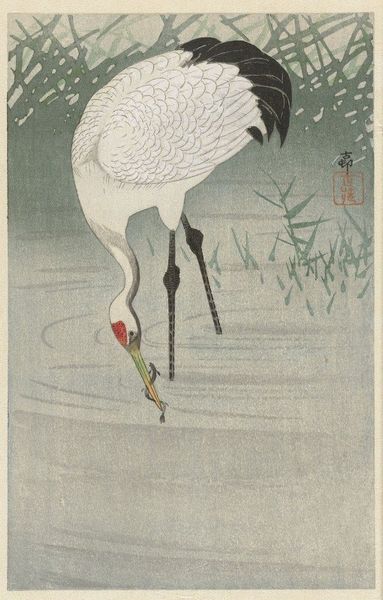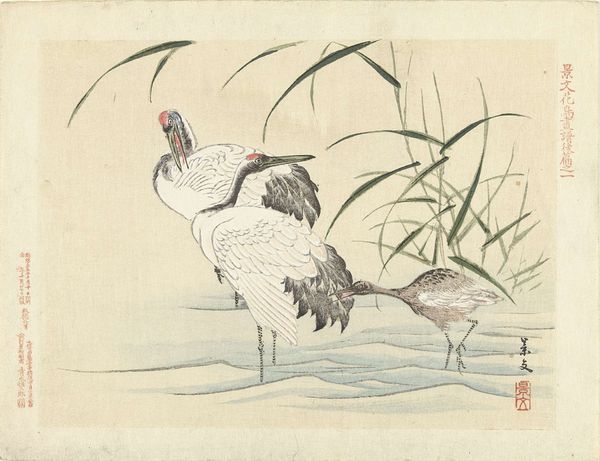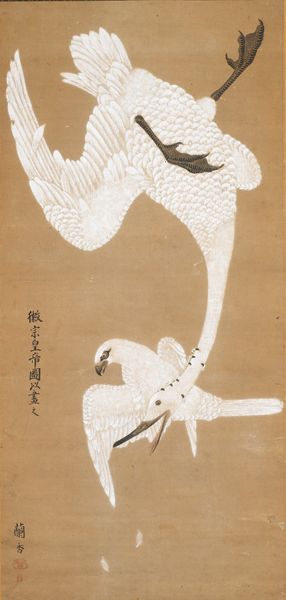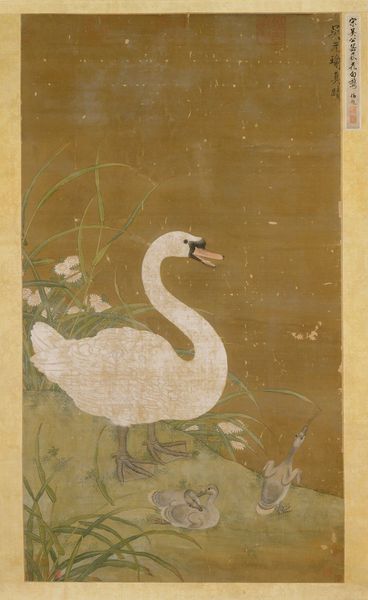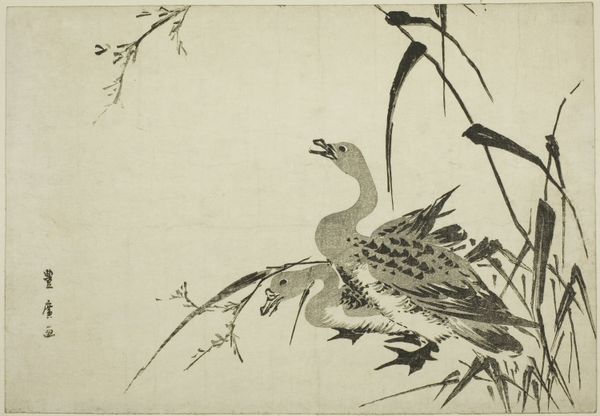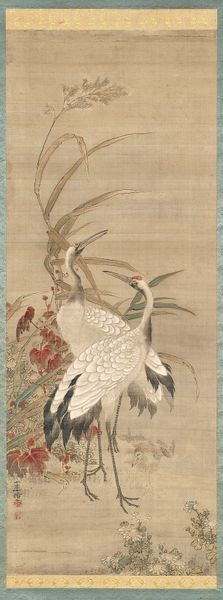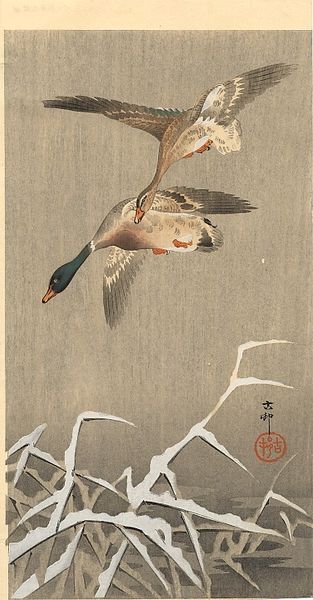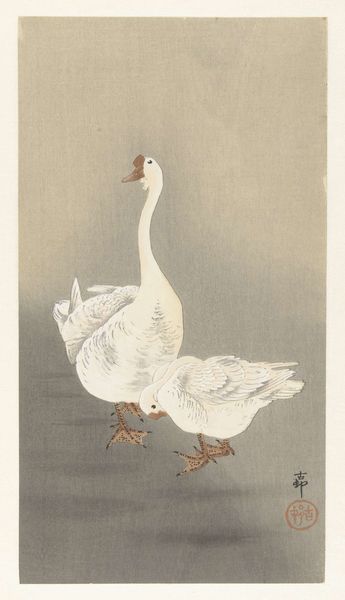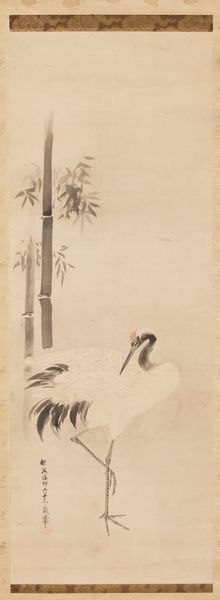
Copyright: Public Domain: Artvee
Editor: So, here we have "Two Geese" by Ohara Koson, likely created sometime between 1900 and 1930. It's a watercolor print, and the composition is so simple, almost stark. It's fascinating how much emotion can be conveyed with just these two geese against this very subtle background. What strikes you most about this piece? Curator: It reminds me of a haiku—pared down, yet full of resonance. Koson has really captured something essential here, hasn't he? It's that sense of quiet observation, the kind that feels very personal, almost like eavesdropping on a private moment between these two birds. I am touched by the seemingly easy way that he is able to capture this stillness. What do you notice about their interaction? Editor: I see what you mean! The geese are almost intertwined, but the top goose seems to be calling out. Do you think that means anything? Curator: It could! Or maybe they're just gossiping about the price of fish at the local market. The beauty of Koson’s work, and indeed much of Ukiyo-e, lies in its ability to let the viewer fill in the blanks. There's a playfulness, too. Look at the slightly tilted heads, that impressionistic detail! It stops you from feeling sentimental and lends an organic quality. He asks us to stop looking so intently, and to use the impression that it makes upon our emotions to fully complete it. Editor: So it’s less about knowing exactly what's happening, and more about experiencing the feeling it evokes? It is quite wonderful. I think I now appreciate the piece in a new light. Curator: Exactly! And maybe that's the real magic, isn't it? This invitation to linger with simple beauty.
Comments
No comments
Be the first to comment and join the conversation on the ultimate creative platform.
